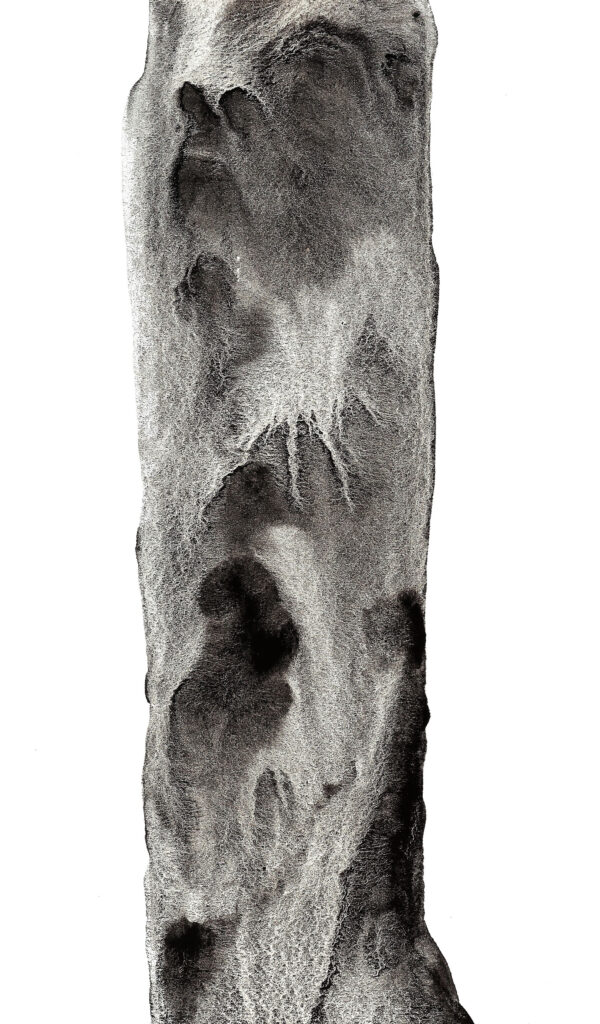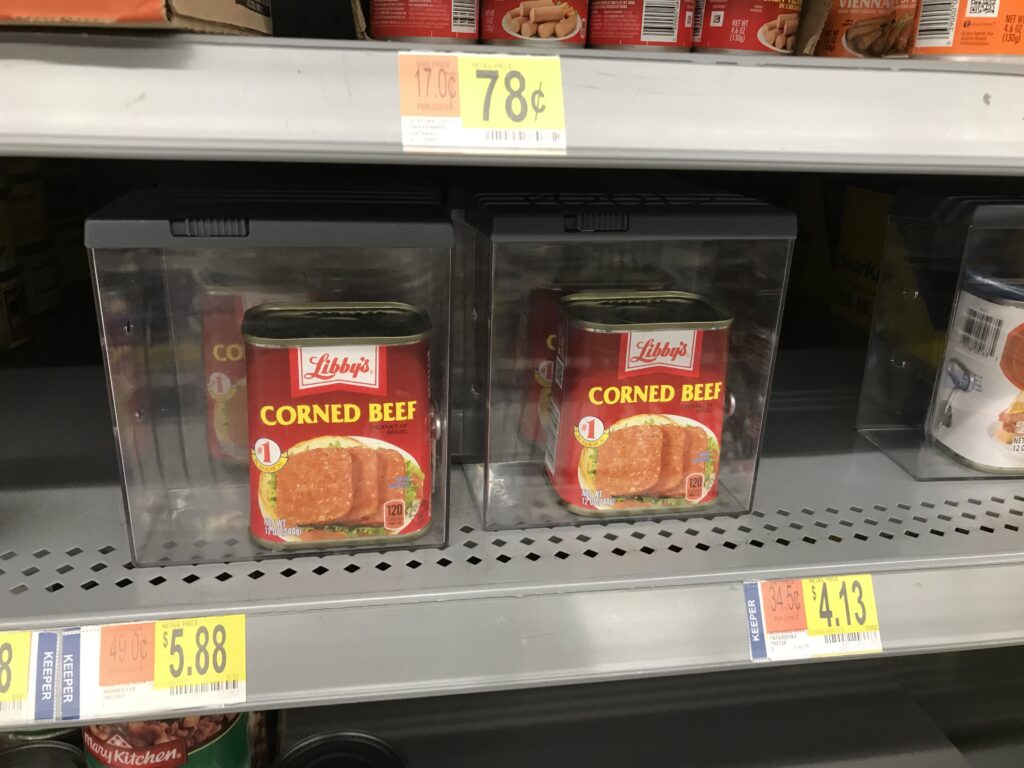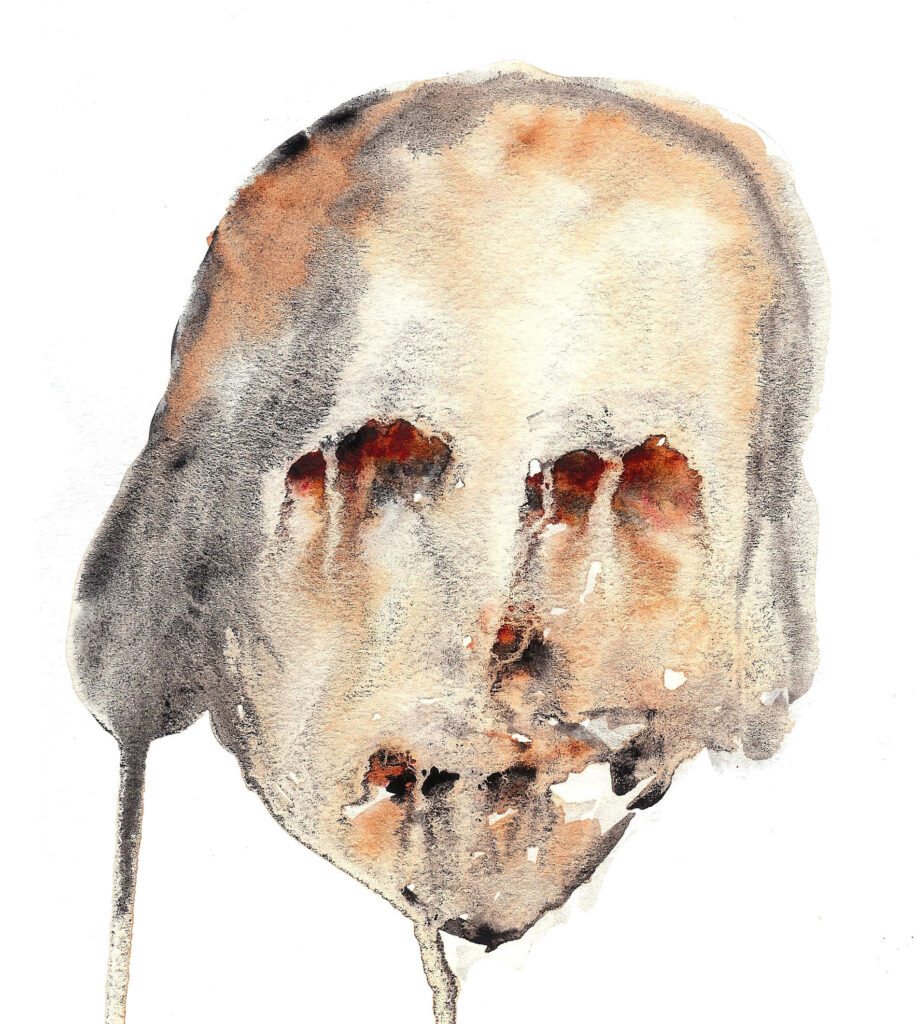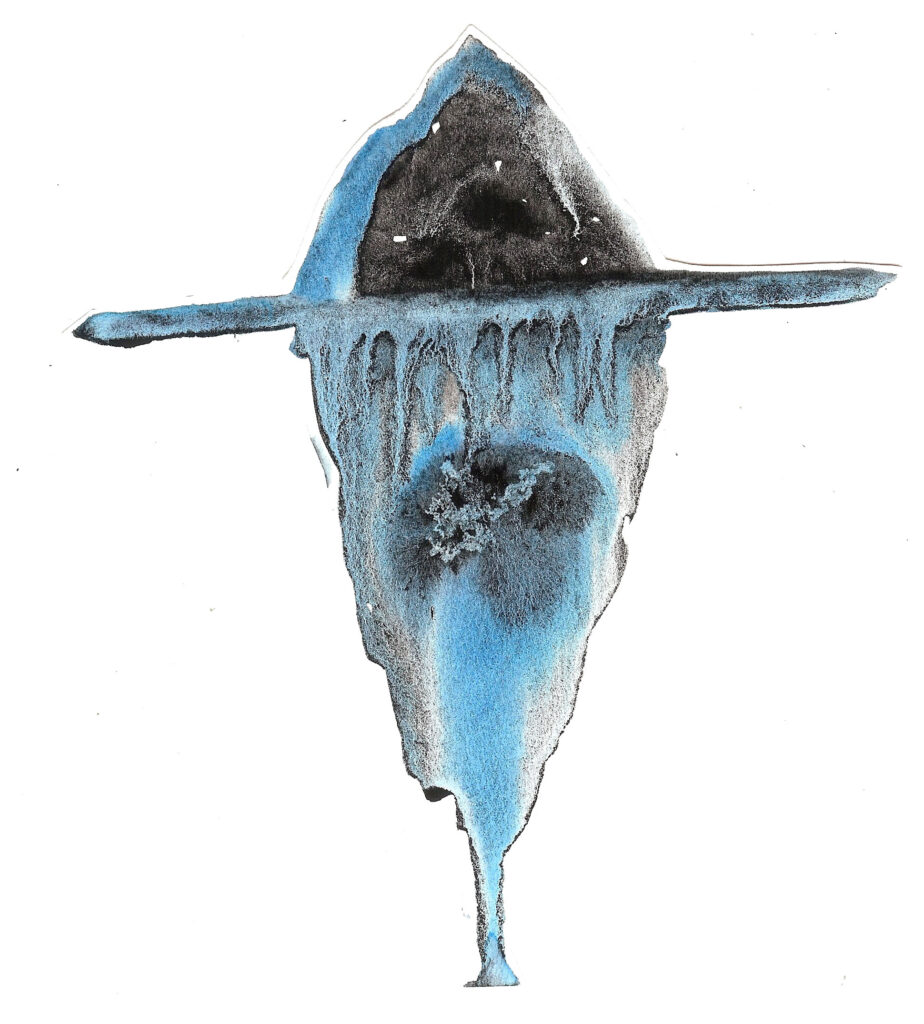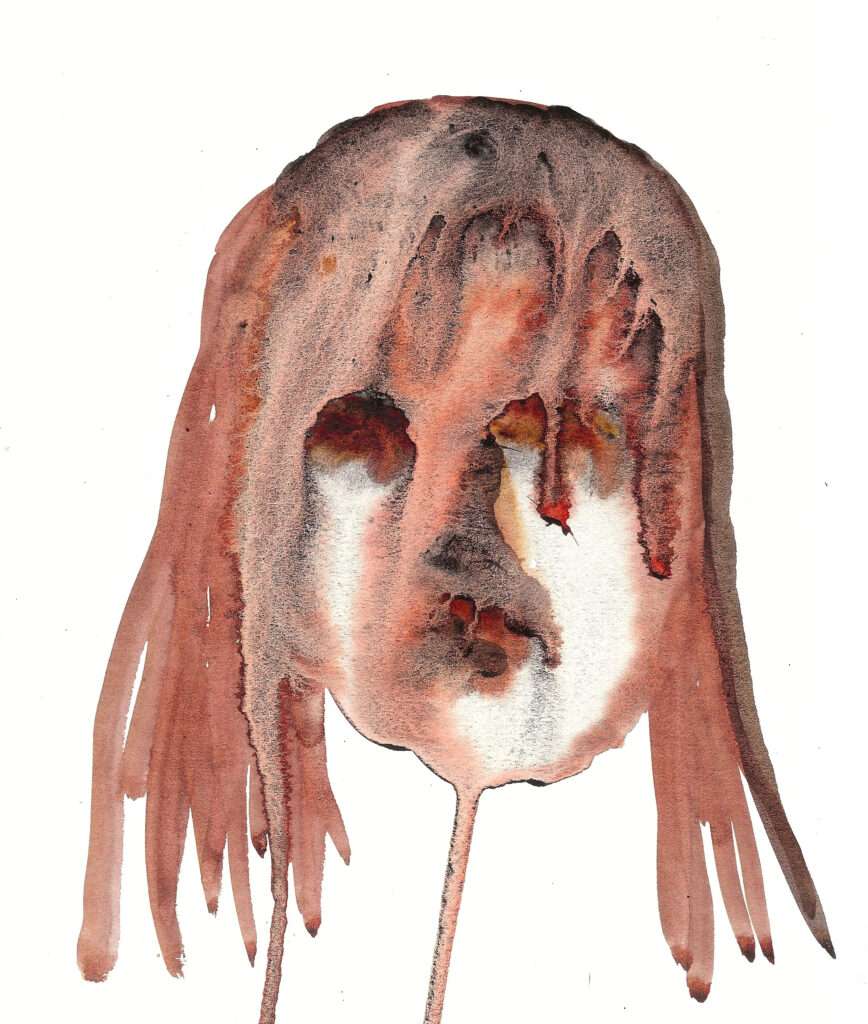Grief operates by its own logic. When my grandmother passed away, I wanted her so badly to visit my dreams. I believed that if she came to me in a dream, it would be proof that she was okay. One week passed, then another, then another. I had no dreams at all for weeks. And when I eventually started dreaming again, the content was so inane that I decided then and there that consciousness was nothing more than the somewhat orderly spasms of neurons triggered by salt rushing in and out of neural pores. I felt in those weeks, my grandmother’s complete absence, her annihilation from this earth absolute. The best books of poetry can remind us of things we have pushed away, pushed aside. While reading Andrés Cerpa’s The Vault, I was reminded of how desperately I wanted my grandmother to visit me in dreams after she died, of how I took her ongoing absence for proof that god didn’t exist. How I took her absence personally, and as empirical proof for the nonexistence of the soul. I wouldn’t have remembered any of this, had I not read The Vault, by Andrés Cerpa. Toward the end of his luminous new book of poems, Cerpa writes about his deceased father finally coming to him in a dream, and I felt a shock of recognition so complete it gave me goosebumps: “And when I asked in the first dream / why he hadn’t come sooner–/ You have to travel first to return.”
The key to the success of Andres Cerpa’s book of poetry, The Vault, is in the writer’s ability to marry the grief of unspeakable loss to the thrill and vulnerability of early love. The fragments in The Vault arrive often in the epistolary form, but are too fleeting to be true letters. The poems seem to want to be stories, but are too rent to hold a single narrative. Cerpa makes it feel so easy, to evoke a whole narrative in fragments and lacunae, but don’t be deceived. This is difficult work.
The presence of grief is palpable from The Vault’s opening, which shows us “the fog that forms like a father disintegrating in a purple chair.” The image struck me as important, and not just because of the echoes of T.S. Eliot. The father appears early anecdotally. Later, we learn the father is dead, and the father disintegrates into the purple chair again. How Cerpa made an unimportant image resonate is a mystery to me. Modern poetry is often illogical, often riddled with mysterious images, and symbolistic flights of fancy. But something about Cerpa’s writing told me that this particular symbolistic flight wasn’t accidental. Perhaps its Cerpa’s ability to anchor his images so firmly in the real world, that made his more surrealistic moments resonate so fully.
In The Vault, grief itself is not named directly, which honors the nature of grief, but also builds a tension. If you’ve read much contemporary poetry, one of the things it often fails to do is create narrative tension. I found myself thrilled to find this here, and compelled to read on.
Of course, the absence of answers (who died? How?) is less to serve a narrative purpose, but more accurately a reflection of the psychological state of the speaker. The grief is so great as to be unspeakable. Cerpa writes: “a year where I wouldn’t let him enter–/ not this book or the book of the dead.”
Loss that cannot be named directly leaves the reader without anchor, and this book of poems would be another aimless elegy were it not for the moments of life that root the reader deeply in something real. This “something” is the speaker’s new relationship with Julia. “Today I woke next to Julia after a simple & resonant night / slowly / we are saying things / leave a toothbrush see me on your bad days too.”
We come to know ourselves through other people. Cerpa writes “who am I without my clothes & friends” without a question mark at the end, the line meant to be read as a statement and not a question. A young man comes to know himself through fashion and through seeing himself reflected in others.
Even as Cerpa’s speaker keeps asserting that his theme is loss, death, decay, and addiction, the real theme beneath the theme is love and its particulars. Cerpa writes: “but let’s get right down to the subject / the drinking.” I don’t believe him. This is not his subject. Drinking is incidental. Cerpa keeps reminding us we are in elegiac territory, but these moments pass through the reader like holes in a tapestry. The tapestry itself is Julia; the tapestry is love: “I wish I could feel the particulars / more particulars / how Julia asked me to stop repeating my fear that she’ll leave me / so often like you’re trying to plant the seed.”
Poets rarely reveal themselves nakedly through their work, often veiling themselves behind the distortions and clarifications of metaphor, analogy, allusion, symbolism, and bare repetition. And yet, there was something refreshingly naked about Cerpa’s work, something that made me worry for him. I found myself desperately invested in wanting things to work out with Julia, even though I feared they wouldn’t. Cerpa’s ability to push me into the mental space of narrative without letting the poems become “narrative” poems pleasantly surprised me.
Things might not work out with Julia: Cerpa writes: “just the sun going down is enough to obliterate everything I love” and “we drove in the dark & missed two exits as spoke.”
The speaker so desperately needs to connect, and when human connection isn’t found, alcohol and pills also serve: “dear Gregorio… you left this world as if there were others / it happened / it happens in fractions & cirrhosis light / in silence / I hold Julia.” These lines would pass unnoticed were it not preceded by this: “the flock moves through the sky like ruin & I am only the man I am today… on my third beer.” The deceased arrive as a kind of warning, a prefiguring of things to come for our protagonist. There’s the “cirrhosis light” which we unconsciously attach to the deceased who “left this world as if there were others” (if I could write a line like that today I’d call it a good one). But I can’t help but read the “cirrhosis light” as a foreshadowing, which makes me worry for the speaker on his “third beer.” And later, I worry more. The fragments give the reader just enough information to be alarming: “three days into a bender… I don’t want another drink.”
If active addiction is the feeling “like I’ve only been alive today,” its opposite would be living for the future. If Julia reflects the aliveness of a potential future, the present means going “home to an empty apartment / have another as I run my hands through the few strands left.” One cannot help but hear Eliot here “I grow old… I grow…They will say: ‘How his hair is growing thin!’”
Poetry is poetry when a single line can say multiple things at once. The speaker watches his reflection in the passing trains “as if I were a ghost or had wings.” To grieve is to be split apart, to be rent. The polysemous word manages to capture the poetic impulse in a single unit. When Cerpa writes: “dear Julia / what it means to me to become a man is to hold you in the place I rent,” we are to imagine his apartment, but also his grief, and the gaping hole it leaves in the heart, and how grief makes even home alien.
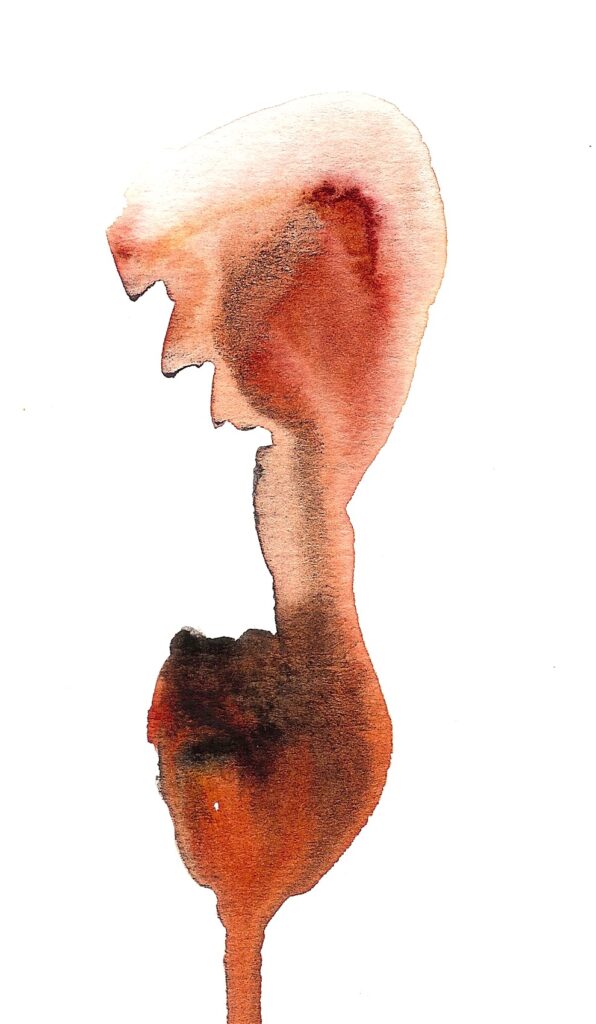
The poetic act is itself a kind of addiction. Cerpa writes about “doing lines alone” and how “The pills are waiting / to dissolve the day / into a bearable likeness.”
Things don’t look too good for the speaker and Julia. Cerpa writes: “when I imagine myself / I am always leaving” and later he writes “dear Julia… forgive me… I’ve come to your door as a stranger.”
“I planned to overdose in the ocean in a foreign city,” Cerpa writes, and I believe him. The ocean has always been a receptacle for hope and despair. Edna Pontellier swam into the sea until it swallowed her up. On darker days, have had such fantasies, too. Grief is a vault into which we put our darkness. We open the vault not without danger.
When prayer arrives in this book, it arrives as desperation: “Take me, / dear lord, if you’re out there / to the end of the end / of us…”
I learned something about how to write poetry from Andrés Cerpa, something about how a narrative can be held through what is withheld, some potential that still resides in free verse between what is spoken. Cerpa doesn’t write the word “overdose” until almost the end, but the thought was everywhere and in every poem.
I felt like these poems could have been pulled directly from a journal, but Cerpa subverts even this reading by making the artifice clear in brief moments: “Notebook—“I’ve been sleeping late. Well into the afternoon or longer, / waiting for darkness to open my eyes.” Of course, even all this could be artifice, too. After all, the best way to hide artifice is to reveal it directly. It’s an age-old technique as old as Chaucer, but one not often used so directly or skillfully.
Finally, finally we get the real letter to the deceased (all along I thought we were reading letters to the dead). “Dear Dad, / You are nowhere I’ve ever been / rebuilt.”
Love is powerful. Grief is a wave that can drown you. Sometimes, grief hides love behind its vault, to protect us.
My grandmother returned to me in a dream at last. It had been almost a decade since she’d died. I had flown to Puerto Rico alone for Christmas. On Christmas day, I surfed the waves of Rincon. The current sucked me out past the big rock at Jobos Beach in 12-foot seas (on a day I really had no business being in the water). I paddled out and couldn’t fight the current. But I saw a sea turtle rise up over one of the waves, and felt my grandmother’s presence for the first time in years. I knew I would be okay. I didn’t fight the rip. I let it take me out left past the rock and I caught a wave back in, riding the cycle. Someone on the beach stole the money I had tucked into my shorts and towel. That night, I heard the coqui frogs for the first time. When I had been a child, my grandmother would tell me about them, how they filled the night with their song in Puerto Rico, and how she’d told me we’d go one day. We never went together, but there I was. That night, in my dreams, I stepped foot into her old house for the first time, and found her sitting on the couch, waiting for me, as if she had been waiting there all along.
After Puerto Rico, my grandmother visited me often.
Sometimes, it wasn’t her. Often, it was just her house. The strangler fig tree she had loved still out front (not chopped down like in real life). I’d climb it. Or I’d wander through the house opening closets, finding the things there I expected to find: her clothes, stuffed animals, books, kittens. And then, my grandmother herself, sitting on the couch.
I only see her when I’m wasting my life—hopped up on some new obsession, addicted to some new thing when I should be writing. She usually doesn’t say a thing, just gives me a look.
I wake up. Try to do better.
The Vault by Andres Cerpa at Amazon.com (affiliate link)
The Vault by Andres Cerpa at Bookshop.org (affiliate link)
About the Writer
Janice Greenwood is a writer, surfer, and poet. She holds an M.F.A. in poetry and creative writing from Columbia University.

